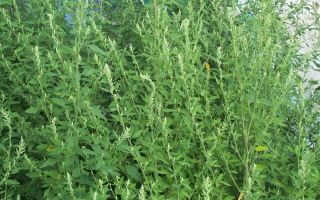Content
- 1 What does quinoa grass look like?
- 2 Where and on what land does quinoa grow
- 3 Types of quinoa
- 4 The chemical composition of quinoa
- 5 Useful properties of quinoa
- 6 Cooking methods
- 7 The use of quinoa in traditional medicine
- 8 Cooking applications
- 9 Application in cosmetology
- 10 Contraindications
- 11 Collection and procurement
- 12 Conclusion
- 13 Reviews of the swan
One of the first plants to appear in spring is the quinoa. Dikoros has found wide application in herbal medicine, cosmetology and cooking. The benefits and harms of quinoa for the body are associated with the constituent substances.
What does quinoa grass look like?
The grass belongs to the Marev family and is often associated with a weed. Quinoa is used as a natural medicine or as a vegetable. It is a wild and garden plant distributed throughout the world. The beneficial properties of the herb have been known since antiquity. The unpretentious plant is also called "white mari". For medicinal purposes, ground parts are usually used:
- leaves;
- stem;
- flowers
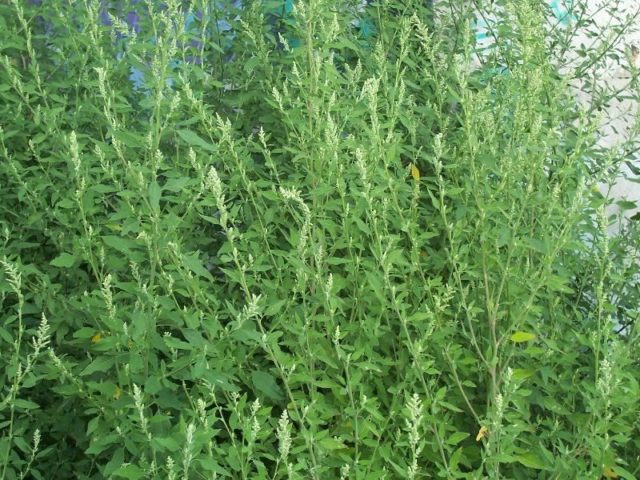
Where and on what land does quinoa grow
The grass is an unpretentious plant. It can be seen near forest belts, in forest-steppe and steppes, in the fields. The habitat of the quinoa is quite wide. It is found in Eurasia, Australia, North America.
Types of quinoa
The extensive genus includes about 100 types. The most popular varieties include:
- White... The semi-shrub has brownish-grayish branches.
 The foliage of the swan is characterized by an oblong-oval shape.
The foliage of the swan is characterized by an oblong-oval shape. - Graying... The stems can develop up to a height of 2 meters.
 The plant has wide and thin leaves
The plant has wide and thin leaves - Sadovaya (red)... The shoot of the annual has thin oblong foliage of various shapes. The color is dark green or red-burgundy, the taste is sour. It depends on the characteristics of the growth. The herb blooms in the summer months and is grown as an ornamental and vegetable plant.
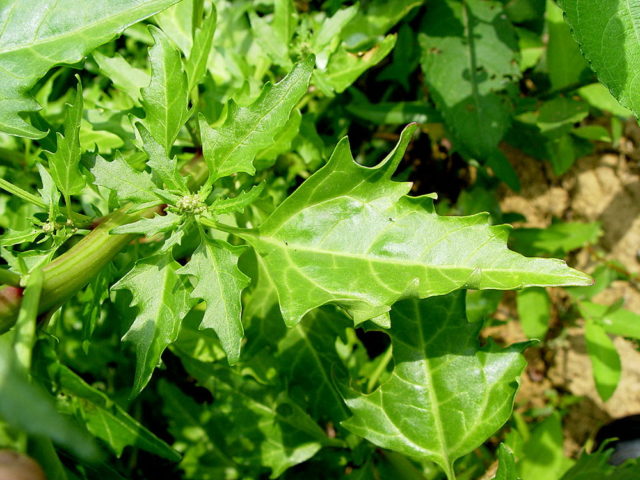 A feature of the type is the presence of a milky shade on the underside of the foliage.
A feature of the type is the presence of a milky shade on the underside of the foliage. - Wild... The species is common in Mongolia and Russia. The grass grows to 50-70 cm. Quinoa is distinguished by jagged reddening leaves of various shapes.
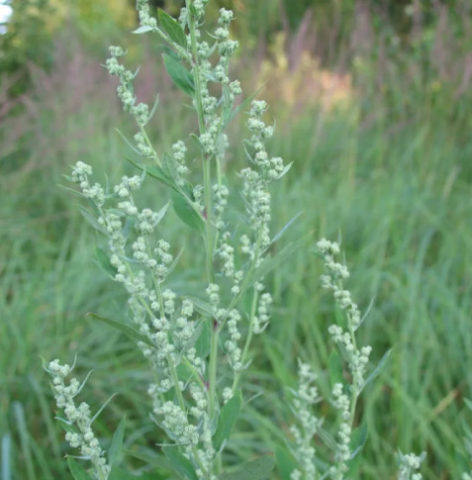 Flowers in the form of balls are located in the area of the leaf axils
Flowers in the form of balls are located in the area of the leaf axils - Tatar... The height of an annual reaches 1 m. The trunk is erect and recumbent. Flowering is observed in June-October.
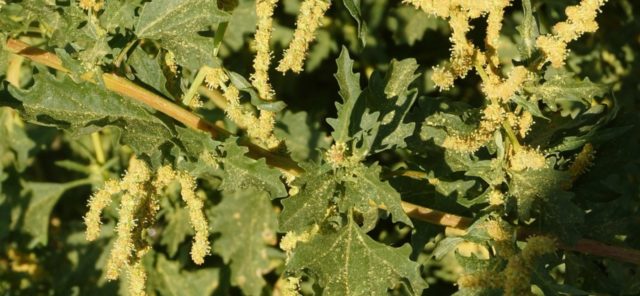 The plant is used as food and feed product
The plant is used as food and feed product - Elongated... The grass usually grows up to 1 m in height.
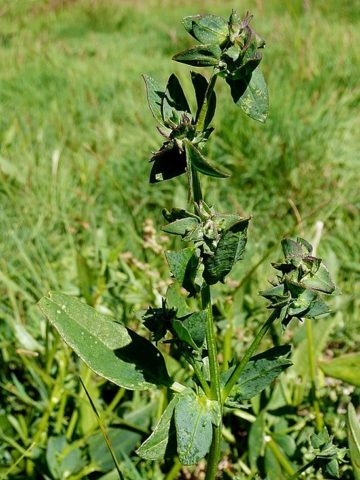 The species is found in Iceland, UK
The species is found in Iceland, UK - Spear-shaped... The trunk of the annual crop is bare and ramified. The foliage has a uniform green color.
 Flowers form spike-shaped inflorescences
Flowers form spike-shaped inflorescences - Heady... It is a herbaceous annual with reddish stems and triangular leaves. Quinoa blooms in June-August.
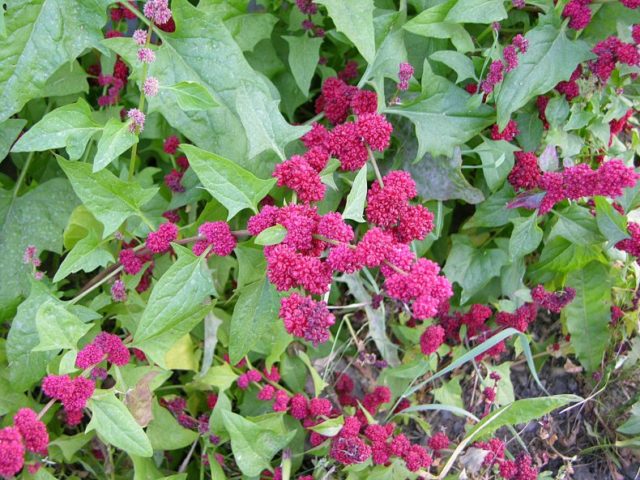 The maximum plant height is 60 cm.
The maximum plant height is 60 cm. - Spreading... The herbaceous plant has a height of 30-150 cm. The trunk is erect and branched.
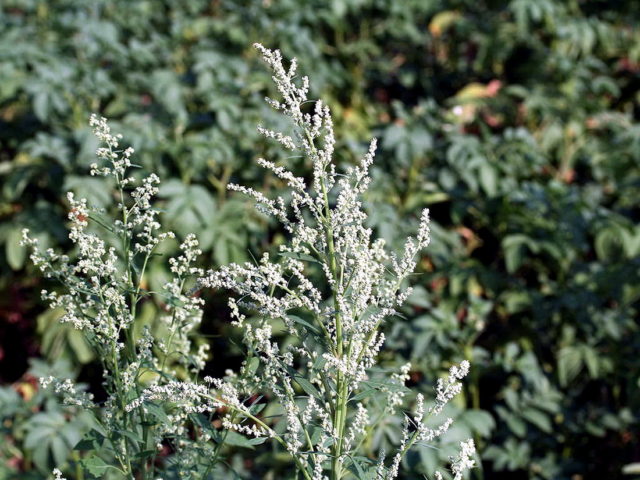 The leaves are characterized by a green tint and a wedge-shaped shape.
The leaves are characterized by a green tint and a wedge-shaped shape.
The chemical composition of quinoa
The beneficial properties of the herb are due to a set of the following chemical compounds:
- rutin;
- potassium;
- organic acids;
- protein;
- proteins;
- pectin;
- calcium, magnesium, phosphorus, sodium;
- zinc, manganese, copper, iron;
- vegetable fiber;
- fats;
- vitamins P, E, C and PP;
- saponins;
- essential oils.
The presence of 17 essential amino acids, which the human body does not produce, is essential. Among the rarest compounds found in plant sources are:
- valine;
- isoleucine;
- leucine.
Useful properties of quinoa
The herb is of scientific interest. The use of the quinoa plant is due to its beneficial properties:
- Cleansing... This is manifested in the ability to remove toxins and toxins.
- Pmouth... The effect is achieved by sputum discharge.
- Disinfectant... The contained phytoncides and antioxidants help fight viruses and bacteria.
- Relaxing... The use of decoctions allows you to eliminate muscle pain caused by inflammation and overexertion.
- Improving vision... The herb contains anthocyanins. They stop the processes of destruction in the eyes.
- Anti-aging... Experts note the high content of antioxidants, which inhibit organ wear and tear, prevent damage to DNA molecules under the adverse effects of free radicals.
The following pathologies are called, in which it is advisable to use a medicinal herb:
- intestinal parasites;
- wet cough or bronchitis;
- inflammation of the gums, stomatitis and other diseases of the oral cavity;
- thrush;
- violation of the integrity of the skin;
- depression;
- radiculitis;
- diabetes;
- age-related changes in the face;
- sluggish appetite.
Application of quinoa:
- improves digestion;
- relieves pain;
- eliminates constipation;
- lowers sugar levels in the body.
Medicinal properties of quinoa herb for women
The plant is characterized by muscle relaxant properties. The herb is used to relieve pain during critical days. The swan has a calming effect. It can help reduce the irritability that accompanies PMS.
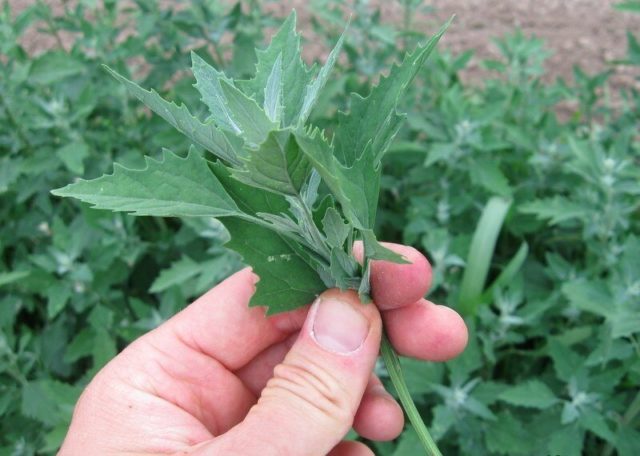
The herb has a rejuvenating effect. It can be used in the form of infusions to eliminate the first age-related changes and improve skin condition. Cosmetologists recommend washing with a remedy made from quinoa twice a day.
A teaspoon of dry herbs is poured into a glass of boiled hot water. Infusion washed after 30 minutes. The duration of therapy is 1 month. For oily skin, you can use cosmetic ice cubes.
It is advised to use quinoa to get rid of extra pounds. This effect is due to an improvement in the functioning of the digestive system and intestinal permeability. The plant is added to smoothies and salads.
Cooking methods
There are various recipes using quinoa herb, the photo and useful properties of which are indicated above. The plant can be used in cooking.
Tincture
Alcohol solution is a popular way to use the medicinal plant. For its manufacture, 2 tablespoons of herbs (field of preliminary grinding) are poured with a glass of vodka. Alcohol is also suitable as a base.
The tool is insisted for 2 weeks. It needs to be shaken periodically. The solution can be used after straining, 1 teaspoon per day.

The juice
Fresh grass is washed, sorted out to remove dry and damaged plants. Quinoa is crushed using a blender. Juice should be squeezed by hand.The herbal gruel is placed in clean gauze and squeezed out.
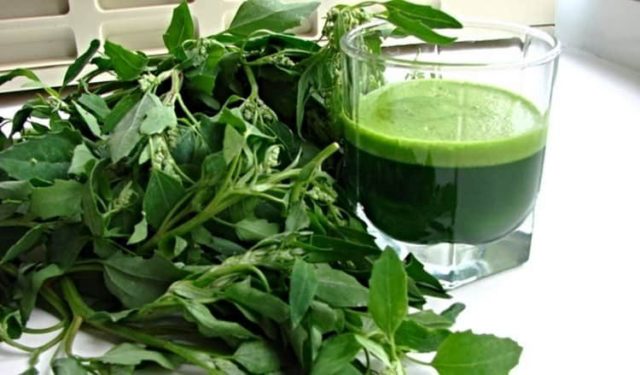
Decoction
The chemical composition of the spreading quinoa is rich in valuable substances. To prepare the broth, a tablespoon of dry seeds is poured with 300 g of boiling water. When the product has cooled down, strain it. So that quinoa seeds do not harm, but benefit, take the broth for 7 days and then take a break.
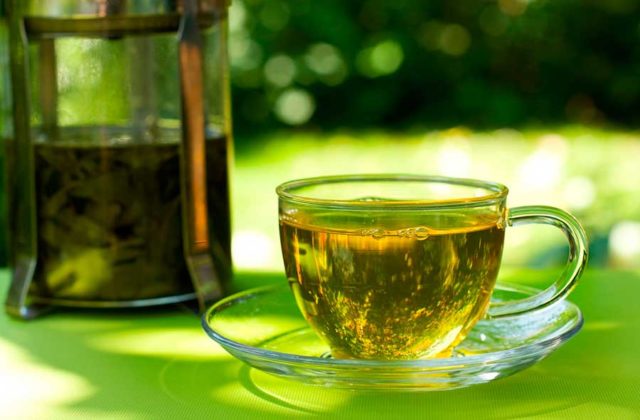
The use of quinoa in traditional medicine
Herbalists pay attention to the effectiveness of wild plants in the treatment and prevention of various diseases. It is known that the plant was widely used in Ancient Russia. Quinoa is able to saturate the body with useful substances, give a feeling of satiety.
Traditional medicine involves the use of wild plants in various forms. For example, infusions, juices and decoctions are suitable for internal use. You can use the grass externally after steaming the leaves.
How to take quinoa for constipation
To normalize the stool, infusions of a medicinal plant are used. Raw materials (4 tablespoons) are poured with hot water (1 glass). The duration of the boil over low heat is 15 minutes. The infusion is cooled and filtered.
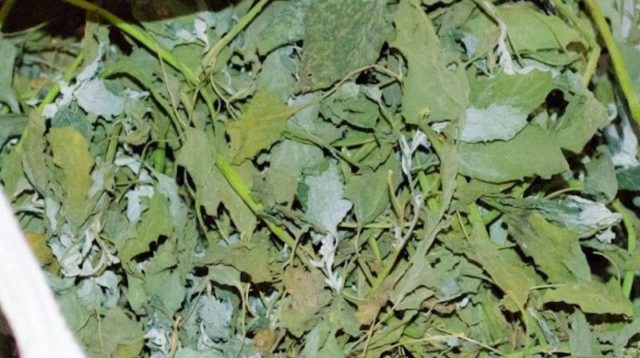
Cough infusion
Dried leaves and stems are suitable for preparing the product. A tablespoon of raw materials is poured with boiling water (300 ml) and insisted for 2 hours.
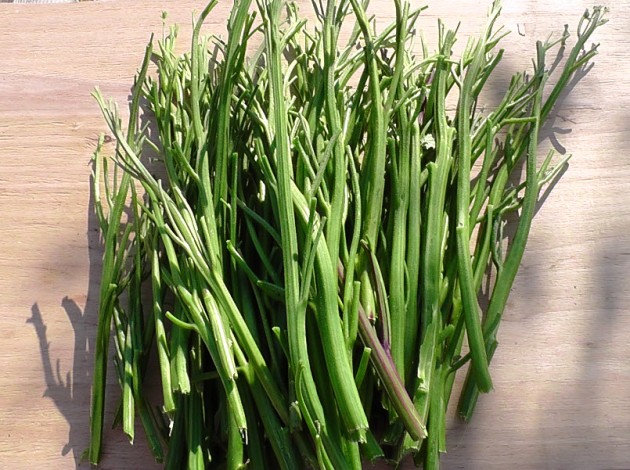
Compress for joint pain
Wild plant leaves are steamed and wrapped in cheesecloth. The compress is applied to problem areas.
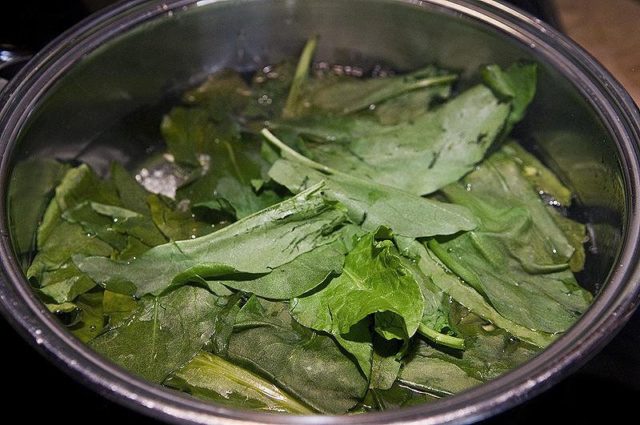
Cooking applications
Quinoa is called wild spinach or flour grass. Cabbage soup is prepared from the plant. Quinoa exhibits its beneficial properties in combination with herbs in various salads. The plant is finely cut, parsley and dill are added, salted and seasoned with vegetable oil.
Spring wild plants can be added to cocktails. The grass is washed, and then boiled over with boiling water, crushed using a blender. Fruits such as kiwi or pear are added to taste.
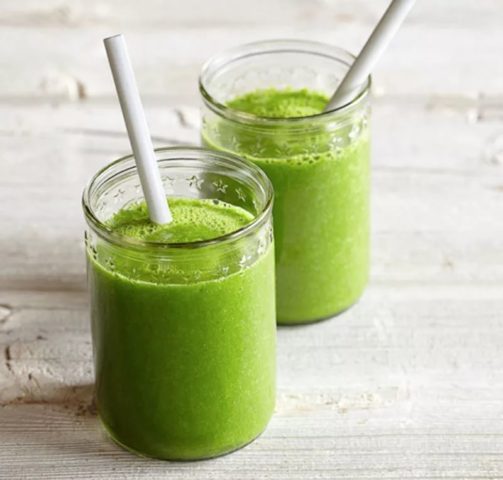
Application in cosmetology
The herb has a powerful anti-aging effect. The addition of the plant to the masks helps to increase skin turgor.
To prepare the composition, you need to pour a teaspoon of chopped herbs with 100 ml of boiling water. The tool is insisted for half an hour, filtered and milk is added (in a 1: 1 ratio). Wipes are moistened in solution and applied to cleansed face. After 20 minutes, the mask is removed. Quinoa-based products are nourishing and moisturizing.
Contraindications
As a rule, phytocomponents have limitations in their use. Quinoa combines not only useful properties, but also contraindications:
- urolithiasis disease;
- gout;
- education in the gallbladder.
Exceeding the recommended medicinal dosages can cause the following consequences:
- allergic reactions;
- diarrhea;
- fever;
- dermatitis.
Ingestion of quinoa broths can provoke an increase in toxicosis in pregnant women.
Collection and procurement
The benefits of quinoa for the human body are undeniable. However, the preservation of medicinal properties depends on the correct collection and subsequent harvesting of medicinal herbs.
Damaged, rotten plants found along roads and factories are unusable. Quinoa is harvested after flowering begins. A prerequisite is the absence of bright sunlight.
The quinoa is carefully cut or plucked. If necessary, the preparation of the roots is dug out, cleaned of the ground, washed.Raw materials should be thoroughly dried either in the fresh air or in a ventilated area. The herb is stored in cloth bags or glass containers.
Conclusion
The benefits and harms of quinoa for the body are due to the chemical composition of the plant. The healing properties of the herb have been known since antiquity. Therapy with herbal remedies based on quinoa is carried out quite gently and is highly effective. To avoid undesirable reactions, you need to observe the proportions of ingredients indicated in the recipes.
Reviews of the swan
Many medicinal plants have proven to be effective. Quinoa, the description and photo of which are indicated above, has been used since antiquity for the therapy and prevention of various pathologies. Reviews contain information on how to use the herb.

